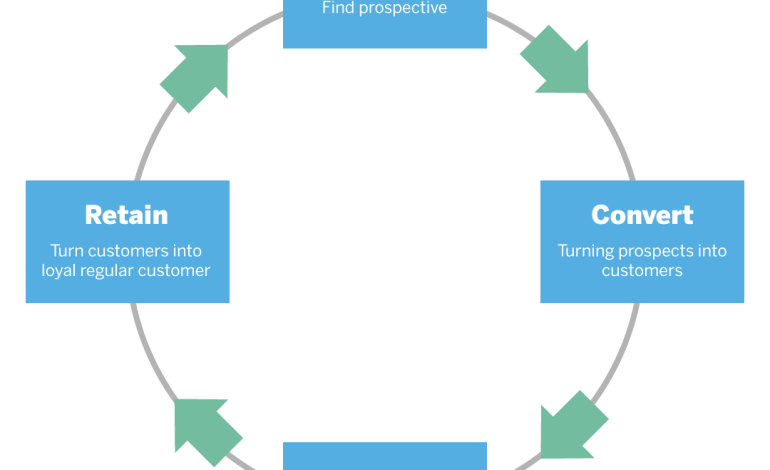Accurately attributing sales and conversions to the several touchpoints in your customer’s journey can be difficult in the fast-paced world of digital marketing. On the other hand, realizing the significance of attribution modeling can transform your marketing initiatives and assist you in making data-driven choices.
For business owners to effectively optimize their campaigns and monitor the effectiveness of their marketing efforts, effective attribution modeling is essential. It enables company owners to better understand customer behavior across numerous touchpoints, identify the most profitable channels, effectively spend their marketing budget, and ultimately increase revenue and return on investment.
Assigning value or credit to every marketing touchpoint that affects a conversion is known as attribution modeling. Any interaction a potential consumer makes with your brand, whether it be from an advertisement, website visit, email click, or free trial download, is called a touchpoint. With the use of attribution modeling, you can monitor the customer journey across several channels and devices and calculate the influence of each touchpoint on the result.
Attribution modeling is important as it enables you to discover which marketing channels are driving the most conversions and revenue, how different channels complement or cannibalize each other, how long it takes for a customer to convert after the first touchpoint, and how to allocate your budget and resources across different channels. Additionally, it can help you identify ways to improve your conversion rate and customer lifetime value. Ultimately, this helps you optimize your digital marketing strategy, increase your return on investment (ROI), and enhance your customer experience.
What is the Importance of Attribution Modeling in Digital Marketing?
In digital marketing, attribution modeling is crucial in understanding the effectiveness of various marketing channels and campaigns. It is the process of identifying and attributing credit to the different touchpoints that lead to a desired outcome or conversion.
Traditionally, business owners relied on last-click attribution, which assigns full credit to the marketing channel or ad the user interacted with right before making a purchase. However, this method fails to consider the impact of previous touchpoints that influenced the user’s decision-making process.
That’s where attribution modeling steps in. It allows business owners to analyze and assign fractional credit to each touchpoint along the customer journey, giving a more accurate representation of the impact of each channel in the conversion process. This provides a more comprehensive understanding of the customer’s path to purchase and enables business owners to optimize their marketing efforts for maximum effectiveness.
In the ever-evolving world of digital marketing, understanding the importance of attribution modeling is crucial for businesses like Mauco Enterprises. Attribution modeling refers to the process of determining which marketing touchpoints contribute to a customer’s conversion or purchase decision. By analyzing various touchpoints across the sales funnel, businesses can allocate conversion credit accurately, optimize marketing efforts, and maximize return on investment.
While default attribution models, such as the last-click attribution model favored by Google Ads, may offer a basic understanding of customer behavior, they fail to paint a complete picture. These models only credit the last touchpoint before a conversion, disregarding the influence of earlier interactions and neglecting the complexity of the buying cycle.
Marketers should consider adopting a multi-touch attribution model to gain a more comprehensive view. This type of attribution model takes into account the contribution of each individual touchpoint along the customer journey. Whether it’s a social media campaign, an email marketing effort, or any other digital marketing channel, each touchpoint plays a significant role in guiding potential customers toward conversion.
One popular multi-touch model is the U-shaped attribution model. It assigns a higher weight to the initial and final interactions, acknowledging their influence in capturing the attention of potential customers and sealing the deal during the time of conversion. This model is beneficial for businesses with shorter sales cycles, as it highlights the importance of both the awareness and closing stages.
Another valuable approach is the custom model, which allows marketers to tailor attribution rules to their specific business needs and behavior patterns. Businesses can create a data-driven model that accurately reflects their unique customer journey by using first-party data and integrating various data sources.
Cross-channel attribution is also critical in today’s digital landscape. With customers interacting with multiple touchpoints and channels, it becomes essential to understand how these interactions impact behavior and drive conversions. Marketers can identify the most effective channels by analyzing the multi-channel funnel behavior and allocating resources accordingly.
Furthermore, comparing attribution models can reveal valuable insights. By contrasting the results of different models, marketers can evaluate the impact of each touchpoint and identify any discrepancies. This analysis can guide marketing teams in optimizing their strategies and allocating resources to the most influential touchpoints.
According to this source, during a survey in the US, 37% of respondents stated that first interaction (first click) was the most used attribution model.
Read Also: Data Privacy and Ethical Considerations in Data-driven Marketing
According to this source, it’s also important to remember that no attribution model can generate a precise value for the return from one individual tactic in a complex system like a B2B sales cycle. These models deliver estimates that we can leverage to understand relative performance, not precise return better. No perfect attribution model can mash every objective and audience together and spit out the one “right” answer. Best practice demands the flexibility to customize marketing attribution, leveraging multiple purpose-built models to answer different business questions.
How Can Attribution Help Your Business?
- Provides Insights for Optimization
Business owners can optimize their marketing strategies by understanding which channels and touchpoints have the most significant impact on conversions. They can allocate budgets and resources more effectively by investing in the channels that generate the most conversions and tweaking or eliminating those that don’t contribute significantly.
- Enables Data-driven Decision-making
Attribution modeling allows business owners to make data-driven decisions based on real insights rather than relying on assumptions or intuition. It provides a clear picture of the customer journey and helps identify the combination of touchpoints that lead to the highest conversion rates. This information lets business owners decide where to invest their marketing efforts and budget.
- Facilitates Personalization
With attribution modeling, business owners can identify the specific touchpoints that resonate with different customer segments. This information enables them to create personalized and targeted campaigns tailored to individual preferences and behaviors. By delivering the right message on the right channel at the right time, business owners can significantly enhance the customer experience and drive higher conversion rates.
- Supports Budget Allocation
Attribution modeling helps business owners understand the ROI of their marketing channels and campaigns. By allocating a budget based on the attribution model’s insights, business owners can ensure their resources are used efficiently. This way, they can optimize their spending to achieve maximum results and prevent budget waste on underperforming channels.
- Enhances Collaboration Between Teams
Attribution modeling requires collaboration between different teams, such as marketing, sales, and analytics. The process encourages cross-departmental communication and collaboration, leading to a more holistic understanding of the customer journey. By aligning their efforts and sharing insights, teams can work together to drive conversions and revenue.
Common Marketing Attribution Models
In today’s digital marketing landscape, understanding the effectiveness of different channels and touchpoints in a customer’s journey is crucial for maximizing ROI and making informed strategic decisions. This is where attribution modeling comes into play. Attribution modeling, using tools like Google Analytics, allows businesses to assign credit to different interactions that lead to conversion events.
There are several types of attribution models, each offering unique insights into customer behavior. Multi-touch attribution models, for example, consider multiple touchpoints throughout the customer journey, providing a holistic view of conversion paths. These models capture the impact of various channels such as organic search, email campaigns, social media posts, and search campaigns, enabling businesses to optimize their marketing efforts based on accurate data.
Common attribution models include the linear attribution model, the position-based attribution model, and the time-decay attribution model. The linear attribution model assigns equal credit to every touchpoint, giving each interaction an equal share in the conversion. The position-based attribution model, on the other hand, gives more weight to the first and last touchpoints, recognizing the role of initial awareness and final conversion actions. The time-decay attribution model attributes more credit to touchpoints that occur closer to the conversion event, acknowledging their immediate impact.
While these common attribution models provide valuable insights, businesses can also create custom attribution models tailored to their specific needs. Custom attribution models allow companies to assign credit based on their unique understanding of their customer’s path to conversion. By considering the significance of different touchpoints and conversion actions specific to their industry or audience, businesses can better understand the impact of their marketing efforts.
Furthermore, with the introduction of Google Analytics 4, machine learning-powered attribution modeling is now possible. Data-driven attribution models analyze vast amounts of data to identify meaningful patterns and assign credit accordingly. This data-driven approach helps businesses uncover hidden insights and understand the actual contribution of each interaction.
Attribution modeling plays a vital role in digital marketing strategy. By accurately attributing conversions to different touchpoints, businesses can allocate resources effectively, invest in high-performing channels, and optimize campaigns for maximum impact. It enables companies to make data-driven decisions based on a comprehensive understanding of their customer’s journey rather than relying on guesswork or assumptions.
By adopting a multi-touch attribution model, companies can better understand customer behavior and allocate conversion credits accurately. Through the analysis of individual touchpoints and the comparison of different attribution models, marketers can optimize their strategies and drive better results. Overall, attribution modeling empowers businesses to maximize their marketing efforts and connect with customers more effectively.
Attribution modeling is essential for business owners looking to optimize their strategies, make data-driven decisions, personalize campaigns, allocate budgets effectively, and enhance collaboration between teams. By understanding the importance of attribution modeling and implementing it in their marketing efforts, businesses can stay ahead in today’s competitive digital landscape.
How to Choose an Attribution Model?
When choosing an attribution model, there is no one-size-fits-all solution. The best model is dependent on your goals, data, and resources. Your business model should be taken into account, as different models have different customer journeys and conversion cycles. Additionally, the quality and availability of your data can determine which model to use; if you have limited or incomplete data, a simple model such as last-click or first-click may be best.
Moreover, the resources and capabilities you have available should be considered when selecting an attribution model; if you have limited time, budget, or expertise, a readily available and supported model may be more suitable. However, if you have more resources available, a customized and tailored model such as linear or position-based may be better for meeting your specific needs and goals.
Once you have chosen an attribution model that suits your business and situation, you can use it to optimize your digital marketing strategy. This includes identifying your most effective and profitable marketing channels and investing more in them, as well as identifying your least effective and profitable channels and reducing or eliminating them.
Furthermore, you can use the attribution model to identify the gaps and opportunities in your customer journey, as well as the best combination and sequence of marketing channels. Additionally, testing and experimenting with different attribution models can provide valuable insights for comparison.
If you’re interested in beginning attribution modeling, you’ll need to define your conversion goals and metrics, such as sales, leads, sign-ups, or revenue. You should also select an analytics tool that supports attribution modeling, like Google Analytics, Adobe Analytics, or HubSpot. Additionally, you’ll need to set up a tracking and tagging system to collect data on your marketing touchpoints across multiple channels and devices.
After that, you can decide on an attribution model that fits your goals, data, and resources or create your own custom model. Lastly, analyze your attribution reports and dashboards to gain insights and optimize your digital marketing strategy.


